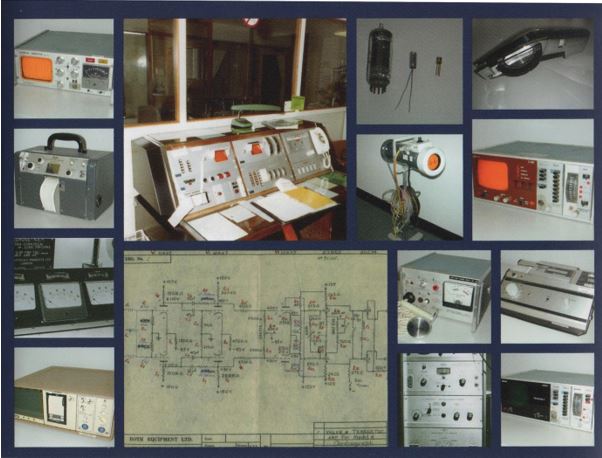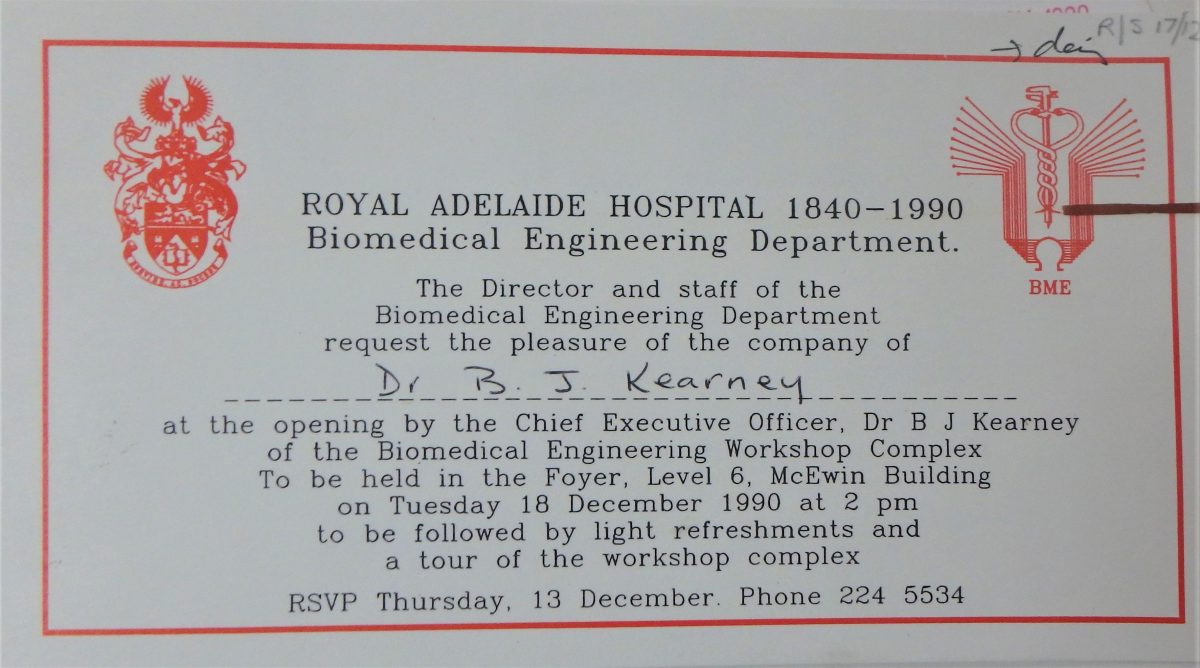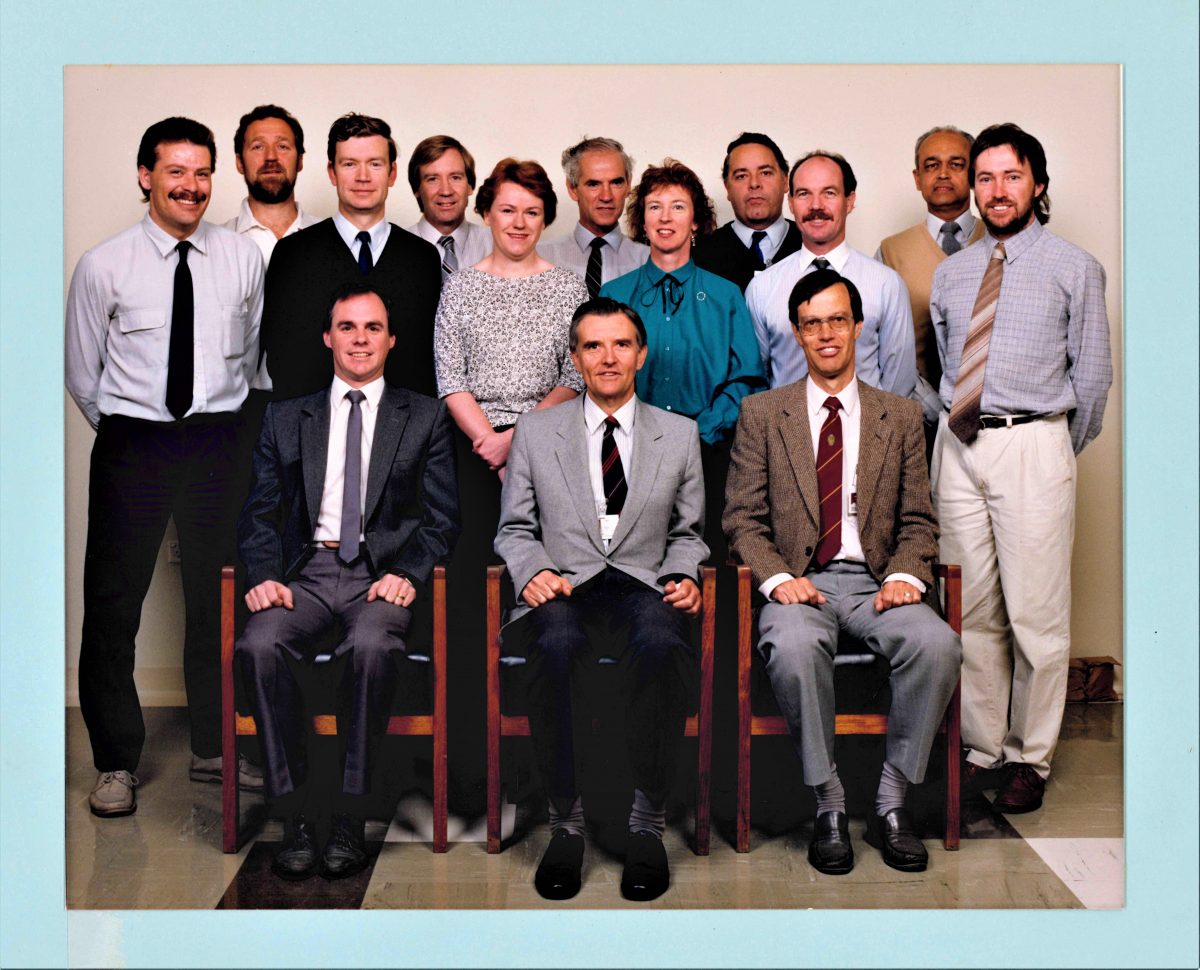Biomedical Engineering (as an engineering disciple in the application of engineering principles and design concepts to medicine for healthcare purposes at Royal Adelaide Hospital) came into being in 1958. It began with the employment of Neville Martin as the first electronics technician. His role was to support the use and maintenance of electronic and other equipment used in the Cardiac Clinic, then located in the Flinders Ward.
In 1960, the Cardiac Investigation Unit was established. To support the growing use of electronic equipment, Neville was joined by Herbert (Bert) Stacey. At this time a dedicated electronics workshop was set up, called the Medical Electronics Department, located in the basement of the East Wing.
The technical staff were, of course, very important. Neville Martin was the original technician appointed in March 1958 … The other person who joined us in 1960 was Hubert Stacy, who was an additional electronic technician assisting Neville Martin
Dr Peter Hetzel, Oral History 2006
The development of the open-heart surgery programme at Royal Adelaide Hospital led to the increased use of electronic equipment to monitor, diagnose and treat patients. To meet the increased demand for technical services, additional staff were employed. Early in 1968, Bevan Quinn and Peter Senn joined a day apart, although Bevan, after a short time, returned to his old employer. When they started, they were working in the
basement of the East Wing, maintaining Both valve-operated ECG monitors and ink writing ECG machines.”
Peter Senn, 2022
Some of jobs they were doing included re-inking the galvanometer reservoirs and the calibration of ECG machines. This was of the utmost importance to ensure the diagnostic accuracy of the ECG recording. Teaching the nursing staff about the equipment was also an important function of their roles; before modern ‘stick-on’ electrodes, the old strap-on and suction electrodes caused many operational problems. Another key responsibility for Bert Stacey was maintaining pacemakers by assessing the correct functioning of implantable pacemakers using an oscilloscope.

At this time, Royal Adelaide Hospital was undergoing major rebuilding works; the planning
for new laboratories to be located in the new Ward Block was extensive and included a workshop for medical electronics. Dr Maurice Sando (Director of Anaesthesia), Neville Martin and Dr Hetzel with Robert Blewett from the Public Buildings Department, planned for the equipment and wiring of the new Intensive Care and Coronary Care Units in the new North Wing.
Dr Peter Hetzel – The Development of the Cardiac Laboratory and Biomedical Engineering, 2006
The Royal Adelaide Hospital’s rebuilding program included the relocation of the Cardiothoracic Surgical Unit to the East Wing.
The relocation of theatre again involved specialised wiring and the reinstallation of the original ‘Sanborn’ monitoring recording system to its new recording room in the East Wing … Also, a Recovery Ward had been established, and this had its own monitoring equipment, which Medical Electronics also looked after.
Neville Martin – 45 years of Cardiac Surgery in South Australia – Biomedical backup: Biomedical Engineering, 2006
By 1968, the Cardiovascular Investigational Unit’s name was changed to Cardio-Pulmonary Unit. There were four sections within this Unit:– Cardiovascular Investigation, Pulmonary Functions, Cardiac Surgery Perfusion and Medical Electronics. Cardiovascular Investigation, Pulmonary Functions and Medical Electronics were collocated in Ward Block. Neville Martin became the first Director of Medical Electronics.
Cardiothoracic Surgery Theatre had a Sanborn valve operated Physiological Pressure Monitoring System. The Theatre was electrically connected to a diesel generator which ensured no break power operated the Open Heart Surgery Pumps/Oxygenator and the Physiological Monitoring System. Each morning the Cardiothoracic Theatre operated, MED staff commenced work at 5:30 am to start the generator and then entered the theatre recording room after 30 minutes to ensure the valve-operated monitoring equipment had stabilised, then balanced and calibrated the equipment. Sometime during the surgery, when invasive blood pressures reading were required, the MED staff member would relate the measurements to the Surgeon and record the results and waveforms on a precision Ultraviolet Recorder (Honeywell circa 1960)
Robert wiseman, 2022
Soon, the Department hired its first Apprentice Electronics Technician, Robert Wiseman, who commenced in January 1969.
In subsequent years, an additional apprentice was hired each year, those including Graham Elsegood, Raymond Liddle, Christopher Jeffs and Raymond Ash. These apprentices later became known as “Neville’s Boys”. All except Ray Ash remained in Biomedical Engineering at RAH or other Health Care institutions in Adelaide for most of their working life.
Robert Wiseman, 2022
Biomedical Apprentices/trainees:
- 1973 – Ian Miller
- 1974 – Ray Ash
- 1975 – Chris Jeffs
- 1976 – Adrian Richards
- 1976 – Robin Woolford (first with electronics degree to join
- 1977 – Chris Moore
- <1980 – Hugh Stewart
- <1980 – Dominic Breuker
- <1980 – Lenny Agalawatta
- <1988 – Bob Hancock
- 1986 – Ken Riggs
- 1987 – Tony Amato
By the mid-1970s, the four main divisions within the Cardio-Pulmonary Unit had developed to such an extent that each became an individual department. Medical Electronics became the Department of Biomedical Engineering, with Neville Martin as its first Director. The Department had grown so much that it relocated to a larger area on the third floor of the McEwin Building (old Royal Adelaide Hospital, North Terrace site) in what was the Lomman and Lundy wards.
There was no formal uniform in the early times. One was however expected to wear shirt, tie, long trousers & covered shoes (safety boots had not been invented). Long white lab coats with name indelibly printed in red ink within the internal collar. The white coats served two purposes. On one hand they clearly identified staff as being part of the clinical CVIU team. On the other hand, they protected one’s personal clothes from the equally indelible purple ink used by locally manufactured Both Model N ECG Machines. One of my earliest recollections (not good) as an apprentice was dropping a glass bottle of this dashedly ink leaving the workshop floor stained purple for ever more!
Ray Liddle, 2022
Other departments and staff transferred to BioMedical under Neville Martin’s Direction.
Radiotherapy, Level 2 East Wing:
- 1980 – George Reeves
- 1980 – Chris Penhall
- 1987 – Roger M Pirola
- 1990 – Shane Hines
Instrument Services Division, Level 2 Theatre Block:
- 1945 – Herbert Zeitz
- 1960 – Ray Thompson
- 1967 – Eddie Kilford
- 1967 – Kevin Zeitz
- 1968 – George Newstead
- 1974 – Deg Cotar
- 1976 – Tony Baldachino
- 1977 – David Evans
- 1985 – Steven Knowles
Electrical safety in accordance with with the evolving Australian Standards (1970s) formed a major part of the departments workload. “In the early 1970’s MES in cooperation with E&BS Electricians coordinated the installation of Heinemann Earth Leakage Core Breakers (ELCBs) in all high dependency wards in the Hospital. These were the forerunners for Safety Switches or Residual Current Devices (RCDs) which are now found in every ward not to mention almost all homes today”. Ray Liddle, 2022
The Biomedical Department continued to expand, providing services for the Anaesthesia Department and new A4 ICU (mid 1970s), physiological monitoring of all Anaesthetic Machines (mid 1980s), and the maintaining the Cadwell Spinal Monitoring Equipment for Orthopaedics and Neurosurgery (1990s).
By 1990, the department had been under considerable pressure because of the exponential growth of Royal Adelaide Hospital, with challenges around the lack of staff, test equipment and the overall equipment base. The accommodation and working facilities were upgraded, and the service division was divided into three: treatment, electronics and computer engineering and special projects and support.

Staff of biomedical engineering maintain and service all electromedical equipment in the RAH. They participate in the development of specifications for tendering for new equipment, evaluate tenders in conjunction with the client department and organise and monitor service contracts for equipment where necessary. They also test all equipment entering the hospital for trial or loan. The principal biomedical engineering services ensure that all equipment within the hospital complies with the appropriate Australian standards and particularly those on electrical and mechanical safety.
Robert Wiseman, Acting Director, Biomedical Engineering – Royal Adelaide Hospital Services Directory, 1990

Written by Ray Liddle, Peter Senn, Robert Wiseman